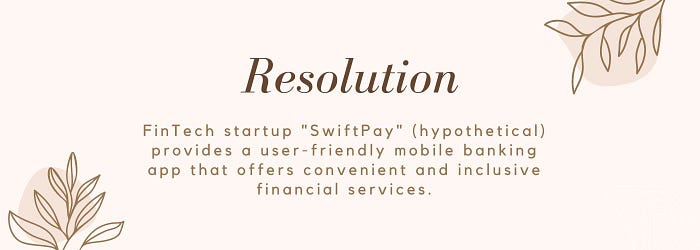

Storytelling in UX Design — PRES Framework
source link: https://uxplanet.org/storytelling-in-ux-design-pres-framework-b39ec7ca91ab
Go to the source link to view the article. You can view the picture content, updated content and better typesetting reading experience. If the link is broken, please click the button below to view the snapshot at that time.

Storytelling in UX Design — PRES Framework

Storytelling in UX presentations is a powerful way to captivate and engage audiences. By weaving narratives into presentations, you can make complex information more relatable and memorable. It enhances overall user engagement and creates meaningful experiences.
One of the main benefits of storytelling in UX design is its ability to create an emotional connection. By leveraging storytelling techniques, you can evoke empathy, inspire motivation, and establish a sense of trust with your users. There are several advantages of using stories to present your ideas and processes:
- Stories have a natural ability to captivate and engage an audience. By incorporating storytelling techniques in UX design presentations, such as narratives, characters, and anecdotes, you can capture the attention and interest of your audience.
- UX design presentations often involve explaining complex concepts, methodologies, or user research findings. By weaving these ideas into a story, you can simplify and contextualize the information, making it more accessible and understandable for the audience. Storytelling helps break down barriers, making it easier for the audience to grasp the essence of the design process and its outcomes.
- UX design is centered around understanding and addressing user needs. Storytelling in presentations allows you to humanize the user experience by sharing user stories or anecdotes that highlight real-life challenges and solutions. By presenting user-centered narratives, you can reinforce the importance of empathy and user advocacy in your design process.
- Furthermore, storytelling in UX design creates memorable experiences. By incorporating narrative elements such as relatable characters, narrative arcs, and meaningful scenarios, you can captivate and engage your audience.
The PRES Framework
There are many frameworks to craft your story. Here we will be discussing the PRES Framework The PRES framework is a storytelling and presentation structure that helps effectively communicate ideas and engage the audience. It provides a clear and concise approach to structuring your message, making it more compelling and memorable. Each letter in PRES represents a key component of the framework
1. Problem
The first step in the PRES framework is to identify and present the problem or challenge that your audience can relate to. This is crucial for capturing their attention and establishing the context of your message. Clearly articulate the issue at hand and explain its significance. By highlighting a problem that resonates with your audience, you create a sense of urgency and establish a common ground for understanding.

2. Resolution
After presenting the problem, it’s time to introduce the resolution or solution. This is where you present your idea, product, or approach that can help overcome the challenge outlined in the problem. Clearly articulate how your solution addresses the problem and offers a better outcome. Highlight the benefits and value it brings. By presenting a well-defined resolution, you provide your audience with a clear path towards a positive change.

3. Example
To support your resolution, provide a compelling example or case study. Share a real-life scenario or story demonstrating how your solution has positively impacted or solved a problem for someone. This example helps to bring your solution to life and makes it more relatable. Use concrete details and storytelling techniques to engage your audience emotionally and intellectually. By providing a tangible example, you create a connection with your audience and make your message more memorable.

4. Summary
In the final step of the PRES framework, summarise the key points, emphasising the benefits of your resolution. Restate the importance of your solution and its impact on addressing the problem presented earlier. The summary serves as a reinforcement of your main message and leaves a lasting impression on your audience. By summarising the key points, you ensure that your message is clear and easy to remember, increasing the likelihood of action and engagement from your audience.

Overall, the PRES framework provides a structured approach to storytelling and presentations. It helps you effectively address the problem, present a well-defined resolution, provide supporting evidence through examples, and summarise the key points for maximum impact. This framework can engage your audience, make your message more compelling, and inspire action towards the desired change.
Recommend
About Joyk
Aggregate valuable and interesting links.
Joyk means Joy of geeK